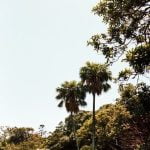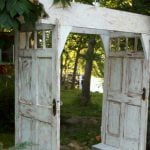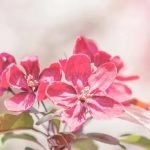Are you looking for ideas for ponds in small gardens? Adding a pond to your small garden can bring a touch of tranquility and natural beauty to your outdoor space. Even with limited space, you can create a stunning aquatic feature that becomes the focal point of your garden. In this article, we will explore various concepts and practical tips for designing, creating, and maintaining miniature ponds in small gardens.
When it comes to planning and designing a pond in a small garden, there are several factors to consider. From choosing the right location to selecting suitable plants and wildlife, creating a harmonious mini ecosystem requires thoughtful planning. Additionally, we’ll delve into different pond styles, from traditional designs to modern aesthetics that suit smaller spaces.
Furthermore, we will discuss how to enhance the beauty of your pond through plant selection and how to introduce fish and wildlife into your miniature aquatic ecosystem. We will also provide maintenance tips to help you keep your small garden pond clean and healthy. Lastly, we’ll explore DIY pond ideas that are creative and budget-friendly options for small garden spaces. So let’s dive in and discover the wonderful world of miniature ponds for small gardens.
Planning and Design
When it comes to planning and designing a pond for a small garden, there are several factors to consider before breaking ground. One of the most important considerations is the size of the pond in relation to the available space.
Since we are dealing with small gardens, it’s essential to ensure that the pond complements the overall layout and doesn’t overwhelm the limited area. Additionally, deciding on the shape and depth of the pond is crucial in order to create a harmonious balance with the surrounding environment.
Another key factor in planning and designing a small garden pond is determining its purpose. Whether it’s meant to be a focal point or more of a supporting element, understanding its role will help guide decisions on size, design, and features. For example, some may want their ponds to attract wildlife, while others may simply want a peaceful water feature to enhance their garden’s ambiance.
Furthermore, it’s important to consider how much sunlight and shade the area receives throughout the day as this will impact plant choices and potential algae growth. In addition, evaluating water sources and drainage capabilities in your small garden will be essential in maintaining a healthy aquatic environment for your pond.
By carefully considering these factors in planning and designing your small garden pond, you can ensure that it becomes an integral part of your outdoor space while also enhancing its overall beauty.
| Factors | Considerations |
|---|---|
| Pond Size | Complement overall layout; not overwhelm limited space |
| Pond Purpose | Determine if focal point or supporting element; impacts size, design, features |
| Sunlight & Shade | Impact on plant choices and potential algae growth |
| Water Sources & Drainage | Essential for maintaining healthy aquatic environment |
Choosing the Right Location
When it comes to creating a pond in a small garden, choosing the right location is crucial. Maximizing space for a beautiful pond requires careful consideration of several factors. The first thing to think about is the amount of sunlight that the area receives. Most pond plants require at least 4-6 hours of direct sunlight each day, so be sure to select a spot that meets this requirement.
Another important factor to consider when choosing the location for your small garden pond is the proximity to trees and large shrubs. Falling leaves and debris can create maintenance issues, so it’s best to avoid placing your pond too close to overhanging branches. Additionally, consider how the pond will fit in with the overall layout of your garden. You want it to be a focal point without overwhelming the entire space.
It’s also essential to check for any underground utilities or pipes before digging, as well as ensuring that the area has good drainage. Once you’ve taken all these factors into account, you can start planning the shape and size of your pond. With careful consideration and planning, you can maximize space in even the smallest of gardens for a beautiful and tranquil aquatic feature.
| Factors | Considerations |
|---|---|
| Amount of Sunlight | 4-6 hours of direct sunlight required for most pond plants |
| Proximity to Trees and Large Shrubs | Avoid overhanging branches to prevent maintenance issues |
| Layout and Overall Garden Design | Pond should be a focal point without overwhelming the space |
| Underground Utilities and Drainage | Check for utilities before digging; ensure good drainage |
Pond Styles
When it comes to creating a pond in your small garden, you have the opportunity to choose from a variety of styles that can complement the overall look of your outdoor space. Traditional pond designs typically feature natural elements such as rocks, water lilies, and perhaps even a small waterfall or fountain. These timeless designs add a touch of classic elegance to any garden and are well-suited for homeowners who want to create a serene and calming atmosphere.
On the other hand, modern pond designs offer a more contemporary and minimalist approach. These sleek ponds often feature clean lines, geometric shapes, and may incorporate materials such as glass, steel, or concrete. Modern pond designs are ideal for those looking to create a more edgy and sophisticated look in their small gardens. Additionally, modern ponds can be designed to serve dual purposes such as functioning as a mini swimming pool or reflecting pool.
When deciding on the style of your small garden pond, it’s important to consider the overall aesthetic of your outdoor space. Traditional pond designs work well with cottage-style gardens or landscapes with lush greenery and flowers. Meanwhile, modern pond designs are better suited for minimalist or urban environments with clean lines and contemporary architecture. Ultimately, the style of your pond should reflect your personal taste and complement the existing design elements in your small garden.
Plant Selection
Selecting the right plants for a small garden pond can greatly enhance its beauty and contribute to the overall health of the aquatic ecosystem. When considering plant selection for your miniature pond, it’s important to take into account the size of your garden, as well as the specific needs of the plants and their compatibility with the water conditions.
One popular choice for small garden ponds is the water lily, which adds a touch of elegance and beauty to any aquatic landscape. Water lilies come in a variety of colors and sizes, making them suitable for different types of ponds. Additionally, submerged oxygenating plants, such as anacharis or hornwort, can help maintain water clarity and provide oxygen to support fish and other aquatic life in your pond.
In addition to selecting plants that thrive in water, you may also want to consider adding some marginal or bog plants around the edges of your pond. These types of plants can help soften the edges of the pond, create a more natural look, and provide habitat for wildlife.
Some popular choices for small garden ponds include rushes, irises, and cattails. By carefully choosing a combination of floating, submerged, and marginal plants, you can create a balanced ecosystem that enhances the beauty and functionality of your small garden pond.
Fish and Wildlife
When it comes to adding life to your small garden pond, incorporating fish and wildlife can bring an added element of beauty and tranquility to your miniature aquatic ecosystem. Here are some ideas for creating a thriving environment for fish and wildlife in your small garden pond.
Fish Selection
When choosing fish for your small garden pond, consider the size of your pond and the climate in your area. Some popular options for smaller ponds include goldfish, minnows, and guppies. These species are well-suited for confined spaces and can thrive in a variety of water temperatures. It’s important to research the specific needs of each type of fish before introducing them to your pond to ensure they will be comfortable and healthy in their new environment.
Wildlife Habitats
In addition to fish, consider creating habitats for other wildlife such as frogs, turtles, and dragonflies around your pond. Incorporating rocks and logs around the edge of the pond can provide shelter for amphibians, while adding floating plants can attract insects that serve as food for many species of wildlife. By creating a diverse habitat around your pond, you can encourage a healthy balance of flora and fauna that will contribute to the overall health of your aquatic ecosystem.
Maintenance Considerations
When introducing fish and wildlife to your small garden pond, it’s important to consider how their presence will impact maintenance needs. For example, the addition of fish may require a filtration system to keep the water clean, while wildlife habitats may need occasional maintenance to ensure they remain a safe haven for local fauna.
Be sure to research the specific needs of each species you introduce to your pond so that you can provide them with a suitable environment while also maintaining the overall health and beauty of your mini aquatic ecosystem.
By carefully selecting fish and creating habitats for other wildlife, you can enhance the beauty and vitality of your small garden pond while also contributing to local biodiversity in your area. With these ideas in mind, you can create a balanced ecosystem that brings life and energy to even the smallest outdoor spaces.
Maintenance Tips
Regular Cleaning and Debris Removal
One of the most important maintenance tasks for small garden ponds is regular cleaning to keep the water clean and healthy for plants and wildlife. Remove any debris, such as fallen leaves, twigs, and excess algae, from the surface of the water. Use a skimmer net to scoop out floating debris and consider investing in a pond vacuum to remove sludge and sediment from the bottom.
Water Quality Management
Monitoring and managing water quality is essential for the health of your small garden pond. Test the water regularly for pH levels, ammonia, nitrites, and nitrates to ensure they are within safe ranges for fish and plants. Consider using a biological filter to break down organic waste and keep the water clear. Adding beneficial bacteria can also help maintain a balanced ecosystem.
Plant and Wildlife Care
Maintaining a balanced ecosystem in your small garden pond involves caring for aquatic plants and wildlife. Prune back overgrown plants to prevent overcrowding that can lead to oxygen depletion in the water. Keep an eye on fish populations to ensure they are not overpopulating the pond, which can lead to nutrient imbalances. Provide shade and shelter for wildlife with floating vegetation or rocks around the pond edges.
By following these maintenance tips, you can ensure that your small garden pond remains clean, healthy, and attractive throughout the seasons. Regular upkeep will help minimize problems with algae blooms, foul odors, or imbalanced water chemistry, allowing you to enjoy the serenity and beauty of your miniature aquatic oasis.
DIY Pond Ideas
Creating a pond in a small garden can bring beauty and tranquility to your outdoor space. However, it’s important to consider the size and design of the pond to ensure it complements the area without overwhelming it. Fortunately, there are plenty of creative and budget-friendly DIY pond ideas that are perfect for small garden spaces.
One idea is to create a container pond using a variety of containers such as wine barrels, wooden barrels, or even large pots. These can be easily converted into mini ponds by adding water, aquatic plants, and maybe even a small fountain or waterfall feature. Container ponds are not only space-saving but also flexible as they can be moved around the garden to change up the scenery.
Another option for small gardens is a raised pond which is essentially an above-ground structure that can be built at various heights to suit your needs. This type of pond is ideal for those who want to avoid digging into the ground or for people with limited mobility who may struggle with traditional ground-level ponds. Raised ponds can also provide an interesting focal point within your garden and offer opportunities for unique designs.
Lastly, if you’re feeling particularly ambitious, consider incorporating a combination fire pit and water feature into your small garden. This multipurpose element serves as both a gathering place for socializing and relaxation while also providing the soothing presence of water. This type of DIY project may require more planning and construction work than other options but can truly elevate the ambiance of your outdoor space.
With these creative DIY pond ideas, it’s easier than ever to add a beautiful aquatic element to your small garden without breaking the bank or taking up too much precious space. Whether you choose a container pond, raised pond, or multifunctional water feature, there are endless possibilities for enhancing your outdoor oasis with the serenity and charm of a miniature pond.
Conclusion
In conclusion, the addition of a pond to a small garden can bring tranquility and serenity to your outdoor space. The beauty of miniature ponds lies in their ability to create a peaceful and calming environment, regardless of the limited space available. By carefully planning and designing your pond, choosing the right location, selecting the appropriate plants, and adding fish and wildlife, you can transform your small garden into a captivating oasis.
When it comes to creating a pond in a small garden, it’s essential to consider factors such as size, style, and maintenance requirements. Traditional or modern designs can both be suitable for small spaces, depending on personal preferences and the overall aesthetic of the garden. In terms of plant selection, opting for aquatic flora that thrive in smaller environments will help enhance the beauty of your pond while maintaining balance within the ecosystem.
For those looking for budget-friendly options or seeking to take on a do-it-yourself project, there are plenty of creative ideas for ponds in small gardens. From using repurposed materials to incorporating unique features like cascading waterfalls or corner ponds, there are various ways to make the most of limited space without compromising on visual appeal.
As long as proper care and maintenance are upheld, a well-designed pond is sure to become the focal point of any small garden – providing an oasis of calm amidst bustling urban life.
Frequently Asked Questions
How Do You Keep a Small Garden Pond Clean?
Keeping a small garden pond clean involves regular maintenance such as removing leaves and debris, cleaning the filter, and adding beneficial bacteria to control algae and maintain water clarity. It’s also important to monitor water quality through testing and make adjustments as needed.
How to Build a Cheap Outdoor Pond?
Building a cheap outdoor pond can be achieved by using materials that are readily available and cost-effective, such as a preformed pond liner or even repurposed materials like an old bathtub or large containers. Utilizing affordable plants and considering DIY filtration options can also help keep costs down.
What Is the Best Position for a Small Garden Pond?
The best position for a small garden pond is one that receives some sunlight but is not in direct sunlight all day, as this can lead to excessive algae growth. It should also be located away from trees to prevent falling leaves from causing debris buildup in the water.
Additionally, ensuring that the ground is level and stable is crucial for maintaining the integrity of the pond over time.

Welcome to my gardening blog! I am passionate about plants and enjoy sharing my knowledge and experiences with others. In this blog, I will write about everything related to gardening, from tips on how to get started to updates on my own garden projects.





